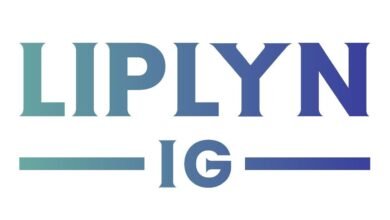The Future of AI: LLM Optimization & Discovery in 2026

▼ Summary
– LLM optimization is a new discipline focused on how brands appear in AI-generated results and requires tracking and improving visibility.
– Tracking brand presence in LLMs uses a polling-based model with representative queries to measure share of voice and mentions over time.
– LLM queries differ from traditional search by being conversational and variable, requiring different measurement approaches than SEO.
– Optimization involves identifying content gaps and improving visibility through high-quality content, third-party mentions, and aligning with SEO strategies.
– Brands should balance SEO efforts with LLM tracking, as strong technical health and authority signals remain foundational for AI visibility.
Marketing and technology leaders increasingly focus on optimizing for large language models like ChatGPT, Gemini, and Claude as these AI systems reshape how consumers discover brands. This emerging discipline centers on improving visibility within AI-generated responses and establishing measurable frameworks for tracking performance. For decision-makers, the challenge involves distinguishing meaningful signals from noise while identifying technologies that deliver tangible business outcomes.
The conversation revolves around two primary components: monitoring your brand’s presence within LLMs and enhancing visibility through strategic optimization. Both require dedicated effort and a clear timeline for implementation.
Tracking serves as the essential foundation for LLM optimization, much like how SEO evolved through improved measurement capabilities. We currently operate in what might be considered the pre-analytics era for LLMs, lacking the sophisticated tools that eventually transformed search engine optimization. Without proper tracking mechanisms, brands essentially operate in the dark, relying on hope rather than data-driven strategies.
Three significant challenges complicate LLM tracking:
- These systems don’t provide query frequency data or equivalent search volume metrics
- Responses vary considerably even for identical queries due to probabilistic decoding and contextual factors
- Hidden features like user history and session state remain inaccessible to external observers
The fundamental difference between traditional search and LLM interactions lies in their conversational nature. While search engines process millions of identical phrases, LLM conversations involve constant rephrasing and exploration. This variability demands entirely new measurement approaches beyond conventional SEO or marketing analytics.
The most promising method adapts election forecasting techniques through polling-based models. This involves defining 250-500 high-intent queries that represent your brand or category, then running these queries regularly to capture response patterns. Tracking tools record when your brand appears as citations or mentions, enabling share of voice calculations across competitors. Early platforms offering these capabilities include Profound, Conductor, and OpenForge.
A comprehensive tracking framework requires multiple data layers since no single metric provides complete visibility. Share of voice tracking establishes baseline measurements, while Google Analytics 4 custom dimensions help identify LLM-originating traffic. Branded homepage traffic in Google Search Console reveals the downstream impact of LLM visibility, as users often validate AI recommendations through direct searches.
Estimating relative query volume within LLMs involves correlating data with existing SEO performance. Begin with your top-performing organic keywords, then factor in industry-specific AI adoption rates. High-adoption sectors might see 20-25% of users consulting LLMs for decisions, while slower-moving industries typically range between 5-10%. Emerging inferential tools are beginning to bridge this measurement gap through API monitoring and machine learning models.
Optimization strategies naturally divide into content creation and strategic alignment questions. The most effective approach analyzes how your brand appears for high-intent queries compared to competitors. Share of voice tools reveal competitive positioning, content gaps, and performing assets. Key insights emerge through thematic visibility analysis, third-party resource mapping, and blind spot identification.
The relationship between SEO and LLM optimization remains fundamentally connected. Research indicates brands ranking on Google’s first page appear in ChatGPT responses 62% of the time. This correlation stems from how retrieval-augmented generation systems pull data from search results. Strong technical foundations, structured data, and authority signals continue serving as the bedrock for AI visibility.
Marketers should maintain SEO as their primary focus while incorporating LLM strategies. Rather than diverting resources, the smart approach layers LLM tracking atop existing SEO practices. AI systems still depend on clean, crawlable content and strong expertise signals.
Off-page strategies for LLMs resemble traditional link building with updated priorities. Citation patterns consistently favor Wikipedia, Reddit discussions, and review websites across major AI platforms. Brands gain maximum visibility by appearing in sources LLMs already trust, requiring targeted outreach to pages being cited within specific categories.
On-page optimization benefits from analyzing which first-party assets receive citations. Tracking tools identify competitor content types being referenced, visibility gaps, and underperforming pages. Three primary opportunities emerge: creating missing content, optimizing existing but unreferenced material, and enhancing pages with better-structured information.
Emerging technologies are beginning to connect insights with actionable recommendations. Early solutions use vector embeddings to compare website content against LLM queries and responses, detecting coverage weaknesses and semantic alignment issues. The next evolution will likely involve automated systems that transform data into business-aligned content.
The implementation timeline typically spans 6-12 months for comprehensive visibility, though early results often appear faster than traditional SEO campaigns. LLMs can incorporate new content within days rather than waiting for extended crawl cycles. However, the fundamental requirements remain unchanged: quality content creation, third-party mentions, and authority building still demand sustained effort.
The most effective strategy balances SEO fundamentals with emerging LLM opportunities. Brands that track citations, analyze third-party mentions, and align SEO with LLM visibility now will establish measurable advantages as these systems mature. The approach involves identifying frequently cited sources in your niche, mapping competitor visibility, auditing your own citation patterns, and maintaining strong SEO practices while expanding into LLM tracking.
(Source: Search Engine Land)





